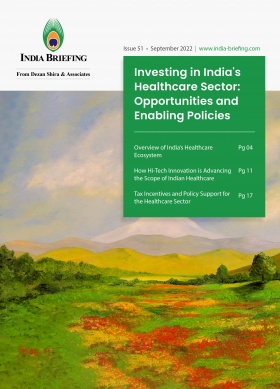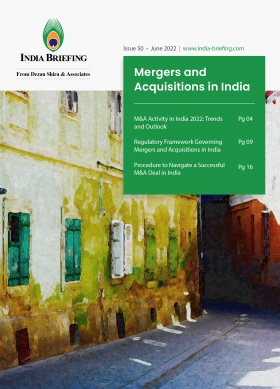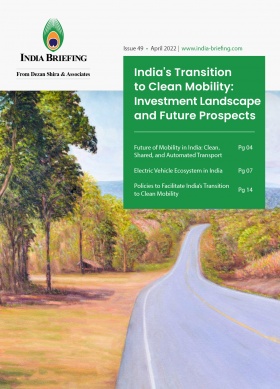India M&A Activity Peaks in 2022, Defies Global Downward Trends
While merger and acquisition (M&A) activity is experiencing a major slump in the US, Europe, and Asia-Pacific markets, India has defied global downward trends by registering record M&A deals in the first nine months (January-September) of 2022. Factors behind the dealmaking surge include want for better technology know-how and strategizing value creation to expand market share, facilitative regulatory regime, as well as the global funding winter, which is expected to continue till the second quarter (Q2) of 2023.
Despite global macroeconomic headwinds signaling economic woes, coupled with the Russia-Ukraine conflict and its ensuing impact on global commodity markets, supply chains, inflation and financial conditions, India’s dealmaking ecosystem has continued to remain robust.
As the merger and acquisition (M&A) activity in India touched a record peak during January-September 2022, industry watchers are buoyant that the dealmaking activity will be further boosted through more consolidations across various sectors, such as financials, technology, healthcare, energy and power, and industrials for value creation and market share gain.
India bucking global downward trends
As per a report by financial solutions provider Refinitiv, India is the only global outlier, bucking the worldwide downward trend with strong gains by value and volume of deals.
The data by Refinitiv suggests that M&A activity in India touched an all-time high of US$148 billion in the first nine months of 2022, witnessing a surge of 58.2 percent year-on year (y-o-y). India’s domestic M&A activity soared by 190 percent in 2022 to US$105.6 billion, primarily driven by the merger of HDFC-HDFC Bank in a deal valued at US$60.4 billion, the largest Indian-involvement deal on record.
It must be noted that other regions are witnessing the largest y-o-y decline in M&A activity since the 2009 global financial crisis. The US has been the hardest hit, dropping 40 percent so far, followed by the Asia-Pacific (down 30 percent) and Europe (down 24 percent).
In private equity (PE)-backed M&A activity, India crossed China for the first time since 2008, accounting for 28 percent global market share in PE-backed deals. China’s market share was 24 percent during the period.
It is noteworthy that while corporate India closed 126 deals in 2021, it registered 113 deals during first three quarters of 2022. The financial services sector accounted for the highest share in total M&A deals, valued at US$69.4 billion. The high-tech sector saw the highest deal volume, with value totaling US$18.6 billion
Start-up deals driving M&A activity in 2022; funding winter attributed to be a factor
Another report by Grant Thornton Bharat revealed that start-up M&A deal volumes during the first nine months (January-September) of 2022 have surged by 55 percent over the same time period in 2021. According to Amit Nawka (Partner, PwC India), a significant portion of the M&A deals concluded in 2022 were opportunistic share-swap deals, unlike the majority of all-cash deals that happened in 2021. This can be attributed to the funding winter that has crippled the global business ecosystem, including India’s start-up funding activity.
According to a report by Tracxn titled “Geo Quarterly Report: India Tech Q3 2022”, Indian start-ups raised US$3 billion in third quarter (Q3) 2022 (July-September), which was 57 percent lower as compared to the previous quarter and 80 percent lower than Q3 2021 (US$14.9 billion).
Consequently, striking a deal with major market players is seen as a survival business strategy. Another explanation for this soaring trend is the recent trend for scope and scale acquisitions wherein larger conglomerates are acquiring their competitors or leaders in different verticals for the want of a wider reach. Moreover, this also facilitates access to already established verticals without the need to raise additional funding.
This trend can be seen across the EdTech sector, which saw heightened M&A activity in late 2021 and 2022 due to funding crunch. The US$225 million raised by upGrad and the US$35 million-round in Sunstone together constituted 85 percent of the total deal value of EdTech Q3 of 2022. This trend is expected to increase in the coming quarters.
Industry experts expect the ongoing funding winter to continue till the second quarter (Q2) of 2023, which will in turn accelerate the start-up M&A activity in the upcoming months.
India’s enabling regulatory regime for M&A
Along with other factors like buoyant cash reserves, increasing FDI inflows, and strategy considerations, India’s upward deal momentum has also been sustained by an enabling regulatory landscape governing M&A.
With the introduction of pragmatic reforms, including the National Company Law Tribunal (NCLT), fast track merger process, as well as permission for cross border mergers, the monitoring landscape for M&A in India has become facilitative.
About Us
India Briefing is produced by Dezan Shira & Associates. The firm assists foreign investors throughout Asia from offices across the world, including in Delhi and Mumbai. Readers may write to india@dezshira.com for more support on doing business in in India.
We also maintain offices or have alliance partners assisting foreign investors in Indonesia, Singapore, Vietnam, Philippines, Malaysia, Thailand, Italy, Germany, and the United States, in addition to practices in Bangladesh and Russia.
- Previous Article Export-Import in India FY 2023: Trends and Key Procedures
- Next Article An Overview of India’s Healthcare Ecosystem










